Abu Sufian
University of Gour Banga, West Bengal, India
Real-Time Human Fall Detection using a Lightweight Pose Estimation Technique
Jan 03, 2024Abstract:The elderly population is increasing rapidly around the world. There are no enough caretakers for them. Use of AI-based in-home medical care systems is gaining momentum due to this. Human fall detection is one of the most important tasks of medical care system for the aged people. Human fall is a common problem among elderly people. Detection of a fall and providing medical help as early as possible is very important to reduce any further complexity. The chances of death and other medical complications can be reduced by detecting and providing medical help as early as possible after the fall. There are many state-of-the-art fall detection techniques available these days, but the majority of them need very high computing power. In this paper, we proposed a lightweight and fast human fall detection system using pose estimation. We used `Movenet' for human joins key-points extraction. Our proposed method can work in real-time on any low-computing device with any basic camera. All computation can be processed locally, so there is no problem of privacy of the subject. We used two datasets `GMDCSA' and `URFD' for the experiment. We got the sensitivity value of 0.9375 and 0.9167 for the dataset `GMDCSA' and `URFD' respectively. The source code and the dataset GMDCSA of our work are available online to access.
Vision-based Human Fall Detection Systems using Deep Learning: A Review
Jul 22, 2022
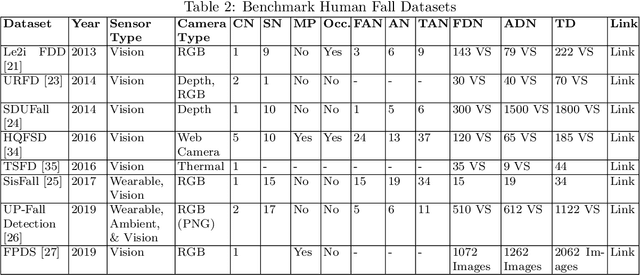


Abstract:Human fall is one of the very critical health issues, especially for elders and disabled people living alone. The number of elder populations is increasing steadily worldwide. Therefore, human fall detection is becoming an effective technique for assistive living for those people. For assistive living, deep learning and computer vision have been used largely. In this review article, we discuss deep learning (DL)-based state-of-the-art non-intrusive (vision-based) fall detection techniques. We also present a survey on fall detection benchmark datasets. For a clear understanding, we briefly discuss different metrics which are used to evaluate the performance of the fall detection systems. This article also gives a future direction on vision-based human fall detection techniques.
A Deep Transfer Learning-based Edge Computing Method for Home Health Monitoring
Apr 28, 2021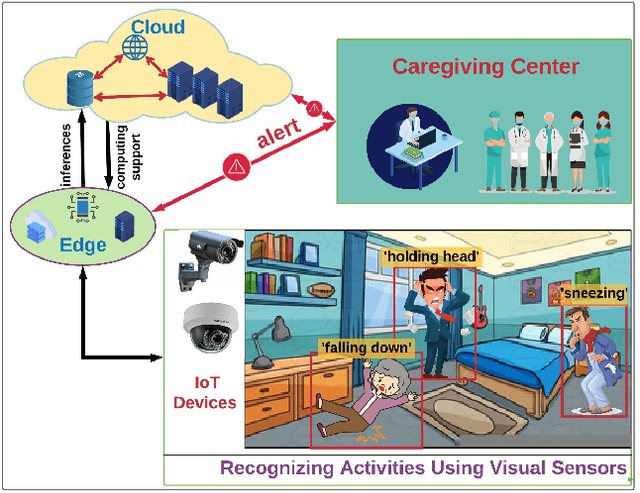
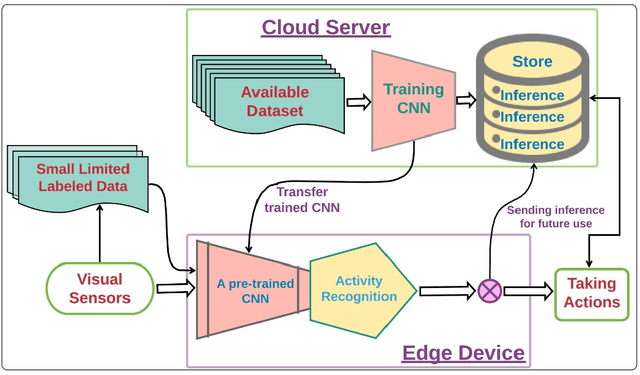
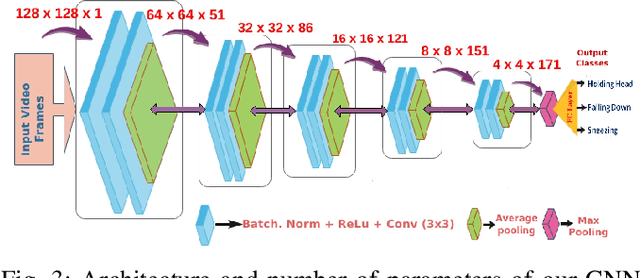
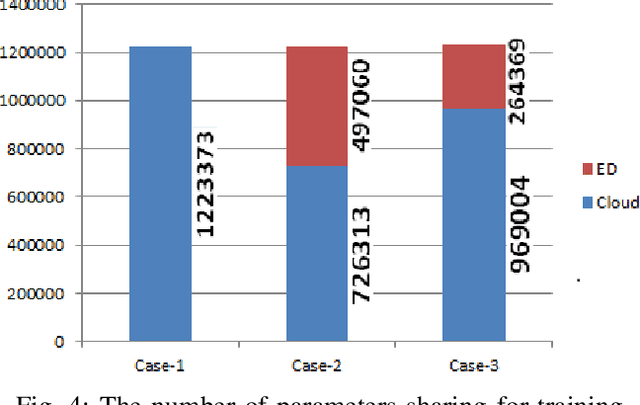
Abstract:The health-care gets huge stress in a pandemic or epidemic situation. Some diseases such as COVID-19 that causes a pandemic is highly spreadable from an infected person to others. Therefore, providing health services at home for non-critical infected patients with isolation shall assist to mitigate this kind of stress. In addition, this practice is also very useful for monitoring the health-related activities of elders who live at home. The home health monitoring, a continuous monitoring of a patient or elder at home using visual sensors is one such non-intrusive sub-area of health services at home. In this article, we propose a transfer learning-based edge computing method for home health monitoring. Specifically, a pre-trained convolutional neural network-based model can leverage edge devices with a small amount of ground-labeled data and fine-tuning method to train the model. Therefore, on-site computing of visual data captured by RGB, depth, or thermal sensor could be possible in an affordable way. As a result, raw data captured by these types of sensors is not required to be sent outside from home. Therefore, privacy, security, and bandwidth scarcity shall not be issues. Moreover, real-time computing for the above-mentioned purposes shall be possible in an economical way.
* 6 pages, 4 figures. Pre-print copy
Reinforcement Learning Based Transmission Range Control (RL-TRC) in SD-WSN with Moving Sensors
Jun 02, 2020



Abstract:Routing in Software-Defined Wireless sensor networks (SD-WSNs) can be either single or multi-hop whereas the network is either static or dynamic. In static SD-WSN, the selection of the optimum route from source to destination is accomplished by the SDN controller(s). On the other hand, if moving sensors are there then SDN controllers of zones are not able to handle route discovery sessions by themselves; they can only store information about the most recent zone state. Moving sensors find lots of applications in robotics where robots continue to move from one room to another to sensing the environment. A huge amount of energy can be saved in these kinds of networks if transmission range control is applied. The multiple power levels exist in each node, and each of these levels takes possible actions after a potential sender node decides to transmit/forward a message. Based on each such action, the next states of the concerned sender node as well as the communication session are re-determined while the router receives a reward. In order to decide the optimum power level in the next iteration, the Epsilon-greedy algorithm is applied in this study. It is determined anew depending upon the present network scenario. Simulation results show that our proposed work leads the network to equilibrium by reducing energy consumption and maintaining network throughput that are suitable for IoT.
Evolution of Image Segmentation using Deep Convolutional Neural Network: A Survey
Feb 10, 2020



Abstract:From the autonomous car driving to medical diagnosis, the requirement of the task of image segmentation is everywhere. Segmentation of an image is one of the indispensable tasks in computer vision. This task is comparatively complicated than other vision tasks as it needs low-level spatial information. Basically, image segmentation can be of two types: semantic segmentation and instance segmentation. The combined version of these two basic tasks is known as panoptic segmentation. In the recent era, the success of deep convolutional neural network (CNN) has influenced the field of segmentation greatly and gave us various successful models to date. In this survey, we are going to take a glance at the evolution of both semantic and instance segmentation work based on CNN. We have also specified comparative architectural details of some state-of-the-art models and discuss their training details to present a lucid understanding of hyper-parameter tuning of those models. Lastly, we have drawn a comparison among the performance of those models on different datasets.
 Add to Chrome
Add to Chrome Add to Firefox
Add to Firefox Add to Edge
Add to Edge